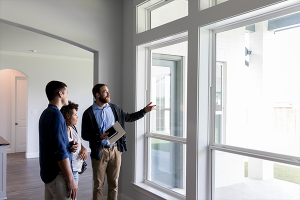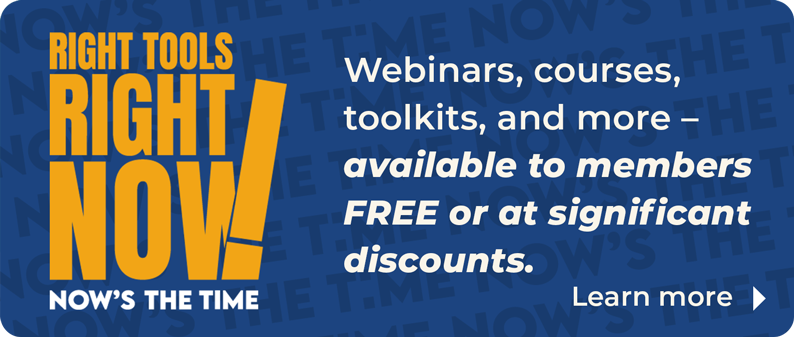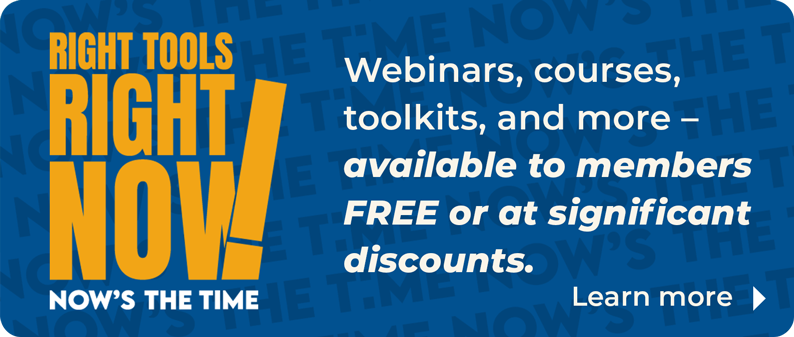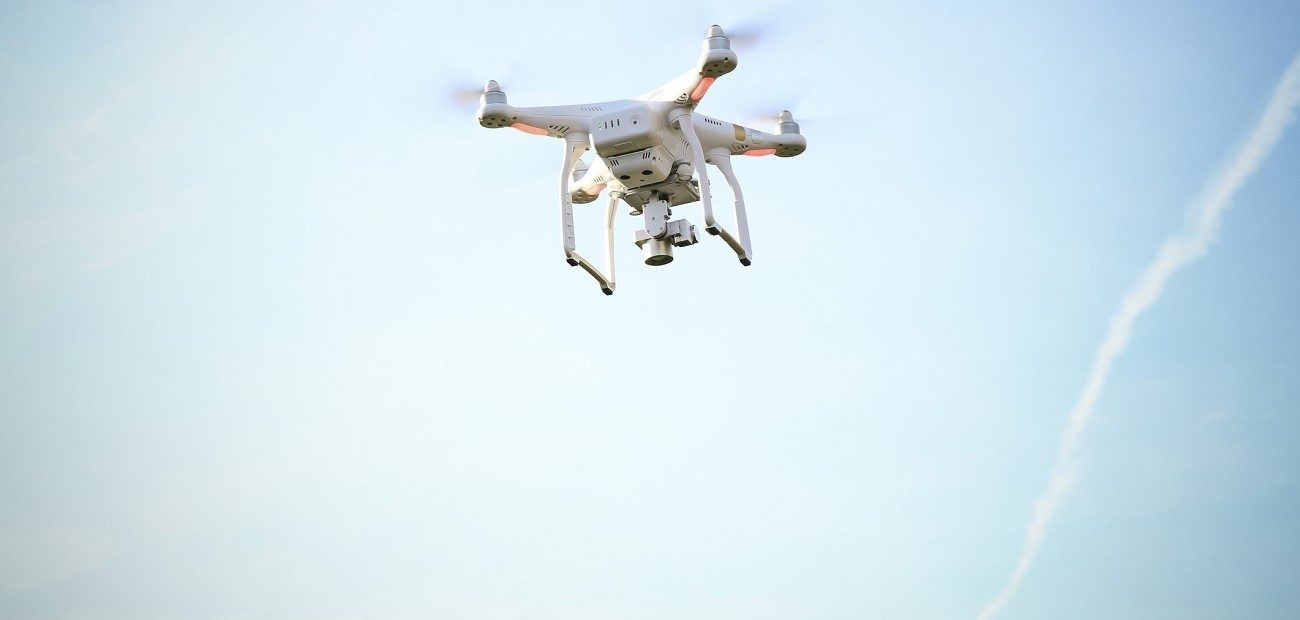Legal
On June 21, 2016, the Federal Aviation Administration (“FAA”) issued the Small Unmanned Aircraft Rule (14 C.F.R. Part 107, the “sUAS Rule”) to regulate the use of small unmanned aircraft systems (“sUAS” or more commonly known as “Drones”). The sUAS Rule sets forth certain operating requirements for Drones, as well as registration and certification requirements for individuals desiring to operate a Drone. The FAA recently amended the sUAS Rule by issuing (1) the Remote Identification Rule, which will require, by September 15, 2023, that drones broadcast a unique identifier, and (2) the Operations Over People at Night Rule, which, effective April 21, 2021, expanded the sUAS Rule to allow a Drone to fly over people and at night under certain circumstances. In response to NAR members’ growing interest in using drone technology in connection with their real estate businesses, we assembled this FAQ to address some of the frequently asked questions regarding the legal and regulatory landscape pertaining to the use of Drones.
What rules apply to the operation of Drones?
The FAA issued the sUAS Rule in 2016, allowing Drones to operate in the National Airspace System. The sUAS Rule establishes certain restrictions and requirements, including pilot certification requirements, for operating Drones.
The Remote Identification Rule and the Operations Over People and at Night Rule each amend the sUAS Rule to more fully incorporate Drones in the National Airspace System by requiring a Drone to broadcast identifying information during flight and by allowing Drone operations at night and over individuals under certain circumstances. More information on the Remote Identification Rule and the Operations Over People and at Night Rule are below.
What qualifies as a Drone?
A Drone is defined in the sUAS Rule as an unmanned aircraft weighing less than 55 pounds. The weight limitation of a Drone includes all of the associated elements required to operate the Drone, and anything onboard or attached to it.
Do I need to register my Drone?
All Drones must be registered with the FAA, and those used for real estate business purposes should be registered under Part 107 (i.e., they do not qualify for the Exception for Recreational Flyers). To register, you will need to provide your email address, physical and mailing address, and details regarding the make and model of your Drone. You will also be required to pay a registration fee. Registration is valid for a period of three (3) years. Once you register with the FAA, you will receive a registration certificate, which you will need to carry on your person any time you operate the Drone. You will also need to include your registration number on an outside surface of the Drone (more information on labeling your Drone can be found here). You may register or renew your Drone registration here.
Is there a penalty for failing to register a Drone with the FAA?
Yes. Failure to register a Drone may result in civil penalties of up to $27,500 and criminal fines of up to $250,000 and/or imprisonment for up to three (3) years.
Do I need a license to fly my Drone?
Yes, you must obtain a Remote Pilot Certificate with a small UAS rating from the FAA. To become a certified remote pilot, an individual must: (1) be at least 16 years old; (2) be able to read, speak, write and understand the English language; (3) be in a physical and mental condition to safely operate a Drone; and (4) pass the initial aeronautical knowledge exam. A certified remote pilot must always possess his or her Remote Pilot Certificate when operating a Drone, and complete online recurrent training every twenty-four (24) calendar months to maintain his or her certificate. More information on the application process and license renewals can be found here.
I already have my Remote Pilot Certificate; do I need to do anything specific in order to operate a Drone at night?
Yes. In order to operate a Drone at night, you must complete either the updated initial test or the updated recurrent online training.
How high does the law permit a Drone to be flown?
In general, a Drone may be flown no higher than 400 feet above ground level, or if flying over a structure, no higher than 400 feet above the structure’s uppermost limit.
What is the fastest speed a Drone can be flown?
A Drone may not travel faster than 100 miles per hour.
Do I need insurance to operate a Drone?
No, the FAA does not require a certified remote pilot to carry insurance to operate a Drone. Most states also do not require insurance, but you should check your state and local laws to be certain. Even if not required, consider purchasing liability insurance to protect against potential liability and accidents. If you engage a party to operate a Drone on your behalf, you may want to require them to carry liability insurance.
Can a Drone be operated any time of day?
Yes, provided that (1) the remote pilot has completed an updated initial knowledge test or online recurrent training prior to such flight, and (2) the Drone is equipped with anti-collision lighting visible for at least three (3) statute miles, with a flash rate sufficient to avoid a collision.
Can a Drone be flown over bystanders?
Yes. The Operations Over People and at Night Rule creates 4 categories of Drones for routine operations over people, and establishes eligibility requirements and operation limits on each:
- Category 1 Drones
- Description: A Drone that weighs 0.55 pounds or less (inclusive of everything on board) and contains no exposed rotating parts that would cause lacerations on impact with human skin.
- Requirements/Operational Limits: Can sustain flight over open-air assemblies of people, provided that the Drone complies with the Remote Identification Rule.
- Category 2 Drones
- Description: A Drone that (1) does not contain exposed rotating parts that would cause lacerations on impact with human skin, (2) would not cause injury to a person that is equivalent to or greater than the severity of injury caused by a transfer of 11 foot-pounds of kinetic energy upon impact from a rigid object, and (3) does not have any safety defects.
- Requirements/Operational Limits: Must have an FAA-accepted means of compliance and declaration of compliance, attesting to the Drone’s design safety standard and its compliance with all production requirements of the FAA. Can sustain flight over open-air assemblies of people, provided it complies with the Remote Identification Rule.
- Category 3 Drones
- Description: A Drone that (1) does not contain exposed rotating parts that would cause lacerations on impact with human skin, (2) would not cause injury to a person that is equivalent to or greater than the severity of injury caused by a transfer of 25 foot-pounds of kinetic energy upon impact from a rigid object, and (3) does not have any safety defects.
- Requirements/Operational Limits: Must have an FAA-accepted means of compliance and declaration of compliance. Not permitted to fly over open-air assemblies. To operate over people, (a) the operation must be in or over an enclosed or restricted-access space where the individuals have been notified that a Drone may fly over them, or (b) if the operation includes sustained flight over an individual, that individual must be directly participating in the flight, under a covered structure, or inside a stationary vehicle that can provide protection from a falling Drone.
- Category 4 Drones
- Description: A Drone that has been issued an airworthiness certificate under Part 21 of the FAA regulations and complies with all maintenance, preventative maintenance, alterations and inspections as required by the FAA.
- Requirements/Operational Limits: Must be operated in accordance with its flight manual or as otherwise specified by the FAA. May fly over open-air assemblies of people, provided it complies with the Remote Identification Rule.
Can I operate a Drone over moving vehicles?
Yes. A Category 1, Category 2 or Category 3 Drone may fly over moving vehicles if (1) the Drone remains within or over an enclosed or restricted-access space, and all individuals within the moving vehicle are notified that a Drone may fly over them in the enclosed or restricted-access area; or (2) the Drone does not maintain sustained flight over moving vehicles. “Sustained flight” is defined as hovering above, flying back and forth over, or circling above the vehicle in such a way that the Drone remains above some part of the vehicle.
A Category 4 Drone may fly over moving vehicles, provided the operating limitations set forth in its flight manual or as otherwise specified by the FAA do not prohibit the operation.
What is remote identification and how do I comply with the new rule?
By September 15, 2023, Drones must have remote identification capability to transmit identification, location and other identifying information about the Drone and the operation to the FAA, law enforcement and other federal agencies while in flight. This can be accomplished in one of three ways:
- Operate a standard Remote ID Drone that broadcasts identification and location information of the Drone and control station. A standard Remote ID Drone is one with built-in remote ID broadcast capability;
- Operate a Drone with a Remote ID broadcast module (which may be a separate device attached to the Drone) that broadcasts identification, current location and take-off information of the Drone. Any remote pilot operating a Drone with a Remote ID broadcast module must keep the Drone in their visual line of sight at all times; or
- Operate a Drone without Remote ID but at specific FAA-recognized identification areas. Any certified remote pilot operating a Drone without Remote ID must keep the Drone in their visual line of sight and within the FAA-recognized identification area at all times.
What should an individual consider when hiring a company to take pictures or videos of property listings with a Drone?
When selecting a company to take pictures or videos of your property listings with a Drone: (1) make sure the Drone operator has obtained a Remote Pilot Certificate; (2) check the company’s insurance coverage in the event of an accident or other liability that can arise from the Drone operation; (3) address copyright ownership of the photos and videos to be taken of your listings in your contract; and (4) include language in your contract for the company to indemnify you for any claims related to the Drone operation, including privacy, personal injury, and property damage claims.
Does the sUAS Rule have any privacy-related provisions?
No. The FAA’s focus is on the safety of the national airspace, and therefore, the sUAS Rule does not have any privacy-related provisions. You should, however, check your state and local laws for any privacy laws pertaining to Drone operations.
In addition to state and local privacy laws, the National Telecommunications and Information Administration (“NTIA”) published a set of Voluntary Best Practices for UAS Privacy, Transparency and Accountability. The NTIA recognizes that the use Drones to take photos and videos may raise privacy concerns, and has issued these practices to address those concerns and encourage the privacy, transparency and accountability of Drone operations. These are not legal requirements or standards, but are instead optional supplements to law.
Are there any additional laws that may apply to Drone operations?
Yes, there is a patchwork of applicable state and local laws that may impose additional restrictions on Drone operations. Review state and local laws in your area before operating a Drone.
Advocacy
References
NAR Library & Archives has already done the research for you. References (formerly Field Guides) offer links to articles, eBooks, websites, statistics, and more to provide a comprehensive overview of perspectives. EBSCO articles (E) are available only to NAR members and require the member's nar.realtor login.
Drones Information From NAR
Source: National Association of REALTORS® Member Profile, 2021
Window to the Law: New Rules Expand Options for Drone Photography (National Association of REALTORS®, Jun. 1, 2021)
If you operate your own drone, keep in mind that just like operating a car, you must have your pilot certification handy during the operation, and be ready to show it upon request.
Using Drones in Your Real Estate Business Webinar-Download (Item E135-121) (REALTOR® Store)
Are you ready to move your business to the next level by incorporating drones video and photos? Find out what you need to know to safely and legally incorporate this cutting edge technology.
Drones, Real Estate, and the Law
5 Things You Must Know Before Flying Drones for Real Estate Photography (HomeJab, May 26, 2022)
“You may not fly your drone over people who are not part of the operation.
This includes:
- People who are actively involved in the use of the product or service being filmed
- Anyone else who is not involved in the operation (this includes spectators)”
What Real Estate Agents Need to Know About Using Drones to Get Aerial Photos of Homes (The Drone Girl, Oct. 5, 2021)
“Whether you look to add drone photography to your skillset, or you’re a real estate agent looking to hire a drone pilot, you’re one step closer to generating listing photos that stand out from the competition. Get those sweeping views of the property, and take prospective buyers on a virtual tour that compels them to make an offer without even visiting.”
Drone Mapping in the Real Estate Industry (Right of Way, Nov. 1, 2020) E
Data such as boundary lines, trails, flood zones, topographic contours etc. can be laid on top of the drone imagery for mapping. Informative data such as deer stands, utilities, hog damage etc. can also be collected and plotted.
A Drone’s Eye View of Rights and Legal Remedies (JDSupra, Jul. 24. 2020)
Some people might be tempted to take the law into their own hands and shoot down an “invading” drone, but such an approach carries a high level of risk for the property owner and may lead to civil and criminal liability. Under federal law, willfully shooting down an aircraft (including drones) is a felony that may lead to imprisonment (18 U.S.C. § 32)—not to mention other potential liability tied to discharging a firearm into the sky. Furthermore, the drone operator could sue the property owner under state tort law and claim damages for the value of the drone and its payload.
Drones and Real Estate Marketing
Benefits of Drone Technology In Real Estate Marketing (OpenGrowth, May 2022)
“Whether you talk about cutting costs or showing the property’s features, the drone helps in every way possible. It assists both the clients and brokers to understand and explain property respectively.”
Why You Should Invest In Drones For Real Estate Marketing (Hometrack, Oct. 25, 2021)
“What’s more, a drone can help you tell a story as it sweeps across the front lawn, up the cobblestone pathway, and through the front door to begin a virtual open house of a property.”
The Bird’s-Eye View: How Drone Photography Can Help Sell Real Estate (Quicken Loans, Jul. 13, 2021)
“If your home is special because of the views it offers or its proximity to lakes, oceans or other scenic sites, there’s nothing like drone photography to make the point. Drones can offer the views a buyer might experience from your porch, or when sailing on the lake that lies just beyond your front door.”
Flying Through Your Listings (REALTOR® Magazine, May-Jun. 2021)
Indoor drone tours work best for homes with dramatic features, such as cathedral ceilings, floor-to-ceiling windows, or large doors that open to impressive outdoor vistas. “When you do a drone tour, it’s more for the ‘sizzle’ of the property,” says Thomas Wasinski, owner of Cleveland-based drone company Aerial Agents.
Drone Use May Be on the Rise (REALTOR® Magazine, Jun. 3, 2021)
Real estate pros who hire a drone operator to capture photos or videos of their listings will want to ensure the company has insurance coverage and the flyer has a current and up-to-date pilot certificate.
9 Ways Real Estate Drone Photography Can Elevate Your Listing (Redfin, Mar. 17, 2021)
One of the best things about drone photography is the chance to show off the love you put into your home’s build. Maybe you’ve invested in imported tile on the roof, have solar panels installed, or had custom backing added. Real estate drone photography not only highlights these intricate features but also provides greater justification if you are listing at a higher price point.
Drones in Real Estate: Can Aerial Views Help Sell a House? (Millionacres, Sep. 20, 2020)
Drone-attained aerial imagery will set you leagues apart from traditional photography, allowing the buyer to get a much better feel for the lay of the land. According to multiple listing service (MLS) statistics, properties with aerial imagery are 68% more likely to sell than those without it.
Videos
Real Estate Drone Photography: A Comprehensive Guide (Vaned, Mar. 4, 2022)
“Do a little reconnaissance to figure out how the property is oriented and when the important angles are lit the best. Midday is often best for minimizing shadows, but if it's full sun, the light will be harsh. Shooting through a neutral density filter can help reduce glare.”
Essential Drone Shots for Real Estate Photography & Videography (Busy Continent, Feb. 28 2022)
“Sometimes called ‘Nadir’, the top-down still shot is a vertical photo taken from directly above the property. This way, a potential buyer gets a clear understanding of the property’s boundaries, land size, layout and any significant features like a pool or basketball court.”
5 Best Real Estate Drone Videos To Inspire You (Styldod, Jun. 17, 2021)
“Track Away: This shot is a wide shot tracking away from the property and it's a reverse shot of the forward reveal.”
8 Drones That Can be Used for Real Estate Photography (Drones Globe, Jun. 19, 2021)
This part of our Best Drones for Real Estate Agents list belongs to the ultimate aerial photography machines. We’re talking about much pricier options in this segment, but ones that can effortlessly complete any and all tasks you put it up against. So, if you’re in a dire need for a professional-grade real estate drone, any of the following five models ought to do the trick!
How To Increase Luxury Home Sales with Drone Real Estate Videos (AccuTour, May 1, 2021)
Using the latest technology like drone video and photography shows prospective sellers that you are current with the latest marketing techniques. They understand that you can make their home stand out and look amazing. Basically, drone video offers your business competitive differentiation making your listings look better, and that means faster sales.
FAA Resources
Getting Started (Federal Aviation Administration, Jun. 1, 2022)
“Drone pilots can fly in controlled and uncontrolled airspace. There are different requirements to you as a pilot depending on which airspace you fly in.”
Operations Over People General Overview (Federal Aviation Administration, Nov. 17, 2021)
“The Operation of Unmanned Aircraft Systems Over People final rule is the next incremental step towards further integration of unmanned aircraft (UA) in the National Airspace System. The final rule allows routine operations over people and routine operations at night under certain circumstances. The rule will eliminate the need for typical operations to receive individual part 107 certificate of waivers from the FAA.”
Certificated Remote Pilots including Commercial Operators (Federal Aviation Administration)
"If you have a small drone that is less than 55 pounds, you can fly for work or business by following the Part 107 guidelines."
Unmanned Aircraft Systems (UAS) (Federal Aviation Administration, Jun. 11, 2021)
The Operations Over People rule became effective on April 21, 2021. Drone pilots operating under Part 107 may fly at night, over people and moving vehicles without a waiver as long as they meet the requirements defined in the rule. Airspace authorizations are still required for night operations in controlled airspace under 400 feet.
Become a Drone Pilot (Federal Aviation Administration, May 19, 2021)
“In order to fly your drone under the FAA's Small UAS Rule (Part 107), you must obtain a Remote Pilot Certificate from the FAA. This certificate demonstrates that you understand the regulations, operating requirements, and procedures for safely flying drones.”
eBooks & Other Resources
The following eBook is available to NAR members:
Drones For Dummies (eBook)
Have an idea for a real estate topic? Send us your suggestions.
The inclusion of links on this page does not imply endorsement by the National Association of REALTORS®. NAR makes no representations about whether the content of any external sites which may be linked in this page complies with state or federal laws or regulations or with applicable NAR policies. These links are provided for your convenience only and you rely on them at your own risk.



















